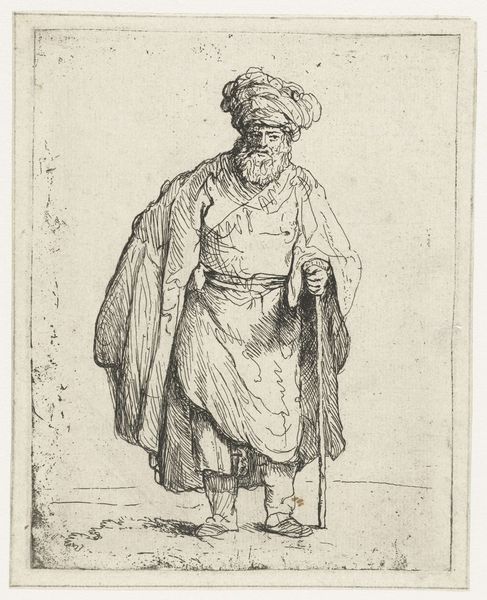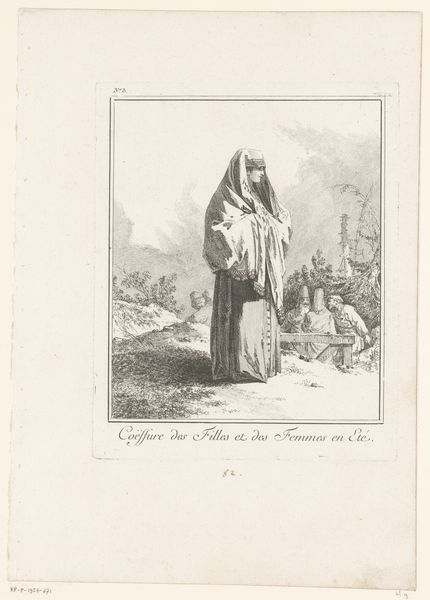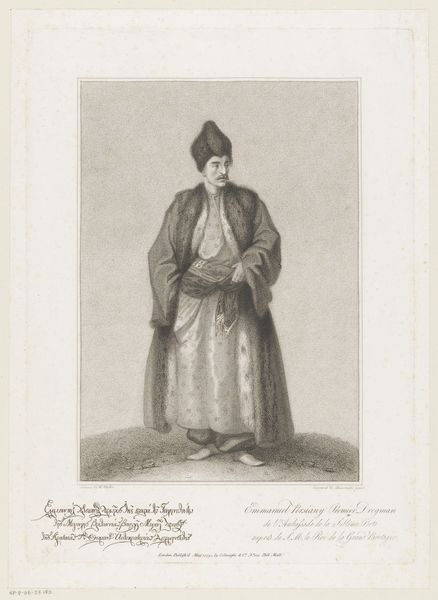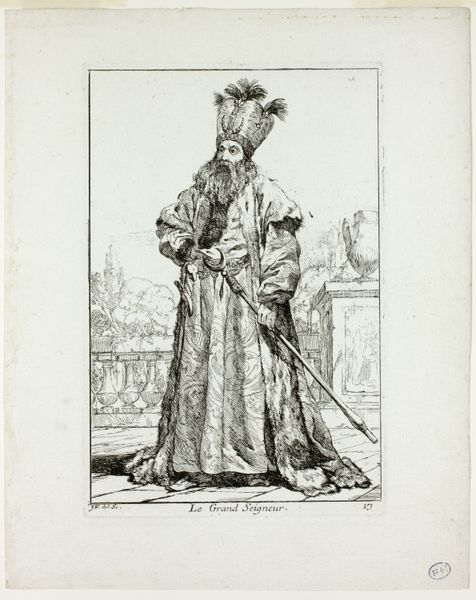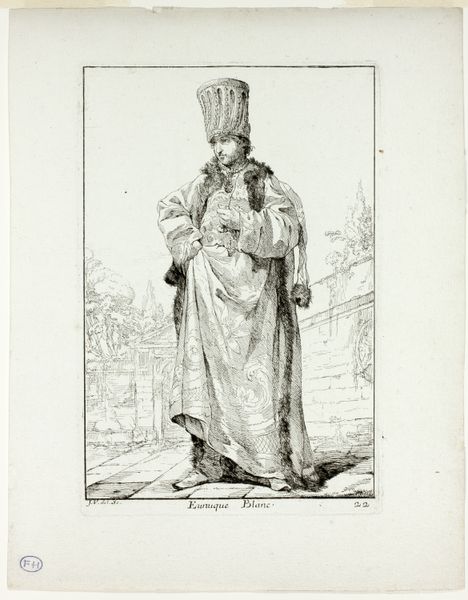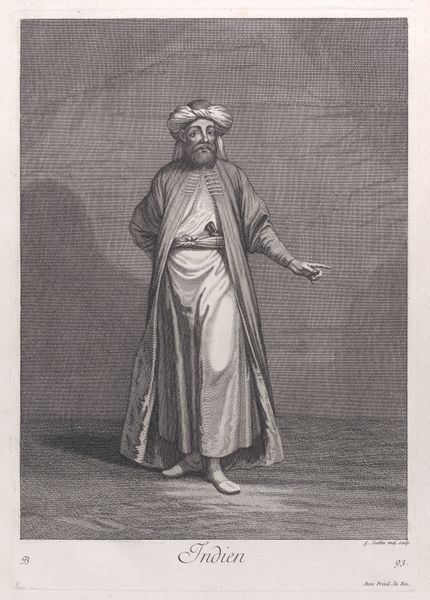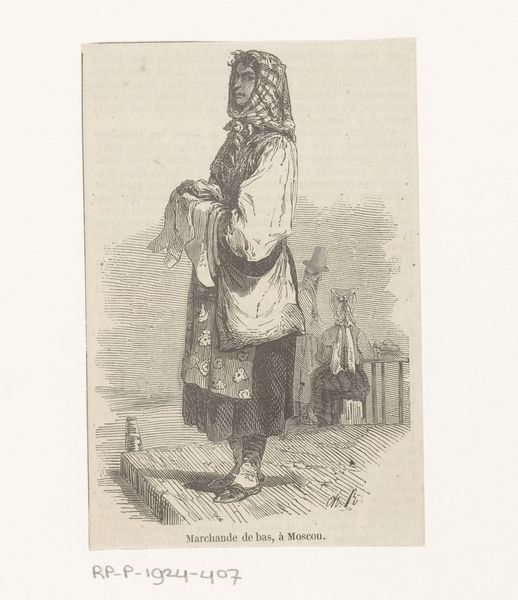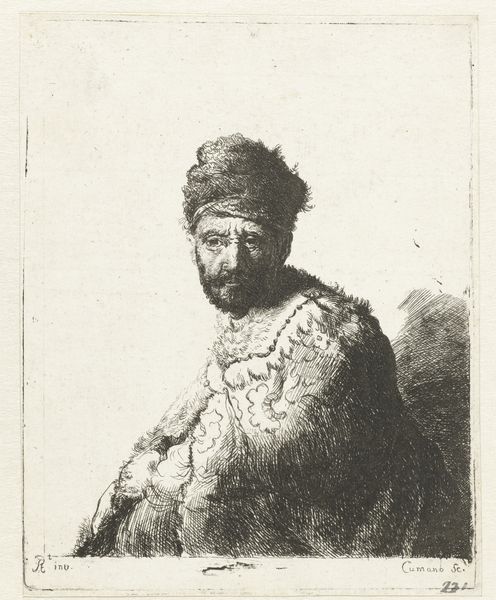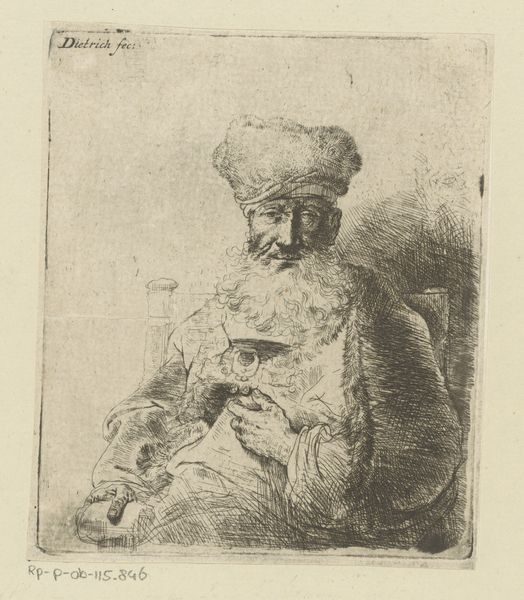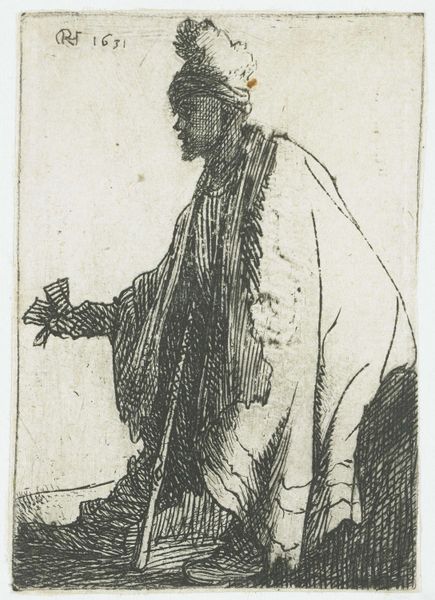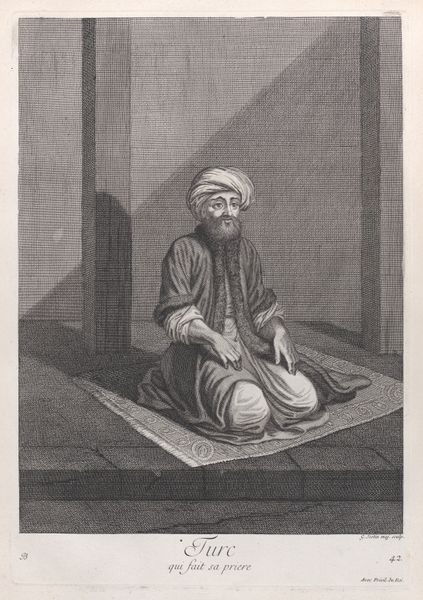
print, etching
#
portrait
#
baroque
# print
#
etching
#
figuration
Dimensions: height 119 mm, width 92 mm
Copyright: Rijks Museum: Open Domain
Editor: This etching, "Standing Man in Oriental Dress" by Jan Lievens, dates back to sometime between 1625 and 1674. I find the textures fascinating, especially how the etching creates depth using just lines. What strikes you about its visual elements? Curator: Notice first how Lievens manipulates line weight and density to model the figure and drapery. Observe the contrast between the densely etched areas, suggesting shadow and volume, and the more sparsely rendered background, which creates a sense of depth and atmosphere. What effect does this contrast have on your reading of the figure? Editor: It makes the figure stand out in contrast to the busy background, almost looming with significance! It seems, however, that the figure itself lacks a specific focal point - almost blending with his robes. Curator: Precisely. While the subject matter implies a portrait, consider the overall composition. The figure is placed asymmetrically, occupying only a portion of the pictorial space. How does this positioning contribute to the work's overall meaning, when understanding Baroque style? Editor: I think it suggests a certain openness and dynamism, rather than the traditional formality we might expect. It keeps the viewer’s eyes moving. Curator: Yes. The Baroque favors movement, emotion and intricate detail. Note the man's attire; while exoticizing, it is depicted with detailed textures and layering. Also consider the almost sketch-like background to foreground balance. These artistic components coalesce, yielding the distinctive qualities and meaning associated with Baroque era portraiture. Editor: I hadn’t thought about how the techniques themselves contributed to the meaning. Thanks for that different view. Curator: My pleasure. Art interpretation thrives through considering interplay between form, technique and context.
Comments
No comments
Be the first to comment and join the conversation on the ultimate creative platform.
